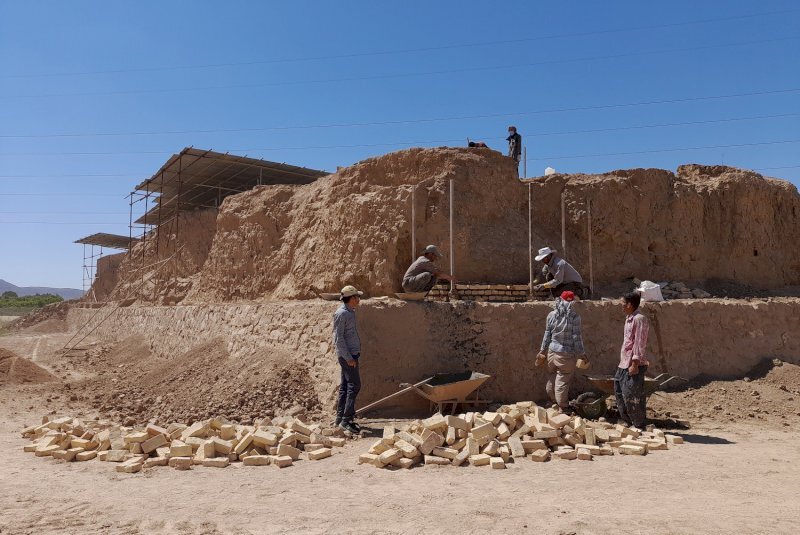Tepe Rivi’s ancient structure restoration complete

TEHRAN – Restoration work on the ancient structures of Tepe Rivi, an archaeological hill in northeast Iran, has been completed after more than one year of work.
In May 2021, the restoration of some ruined structures, particularly those dating from the Achaemenid era (550–330 BC) started.
Archaeological research work in Rivi started in 2012. Since then teams of Iranian and German archaeologists accessed remains of settlements from the Bronze and Iron Age, the Achaemenid (550–330 BC), the Parthian (247 BC – 224 CE), the Sassanid dynasty (224–651 CE), and the early Islamic period.
So far, experts in the fields of archeology, geography, geophysics, geomorphology, and ecology from the [Ludwig Maximilian] University of Munich; the [Free] University of Berlin; the University of Tehran; and Shahid Beheshti University have worked in Rivi archaeological site.
Based on these studies, various architectural and archaeological evidence from the Parthian and the Sassanid era were discovered in the Rivi site, which is situated in Maneh-Samalqan county of North Khorasan province.
In October 2020, several historical clay stamps, estimated to date from the Achaemenid and Parthian eras, were discovered at the ancient site.
Evidence suggests that residents of this area sealed the urns that were loaded with particular goods and then tied them with ropes, the archaeologist said.
AFM
Leave a Comment